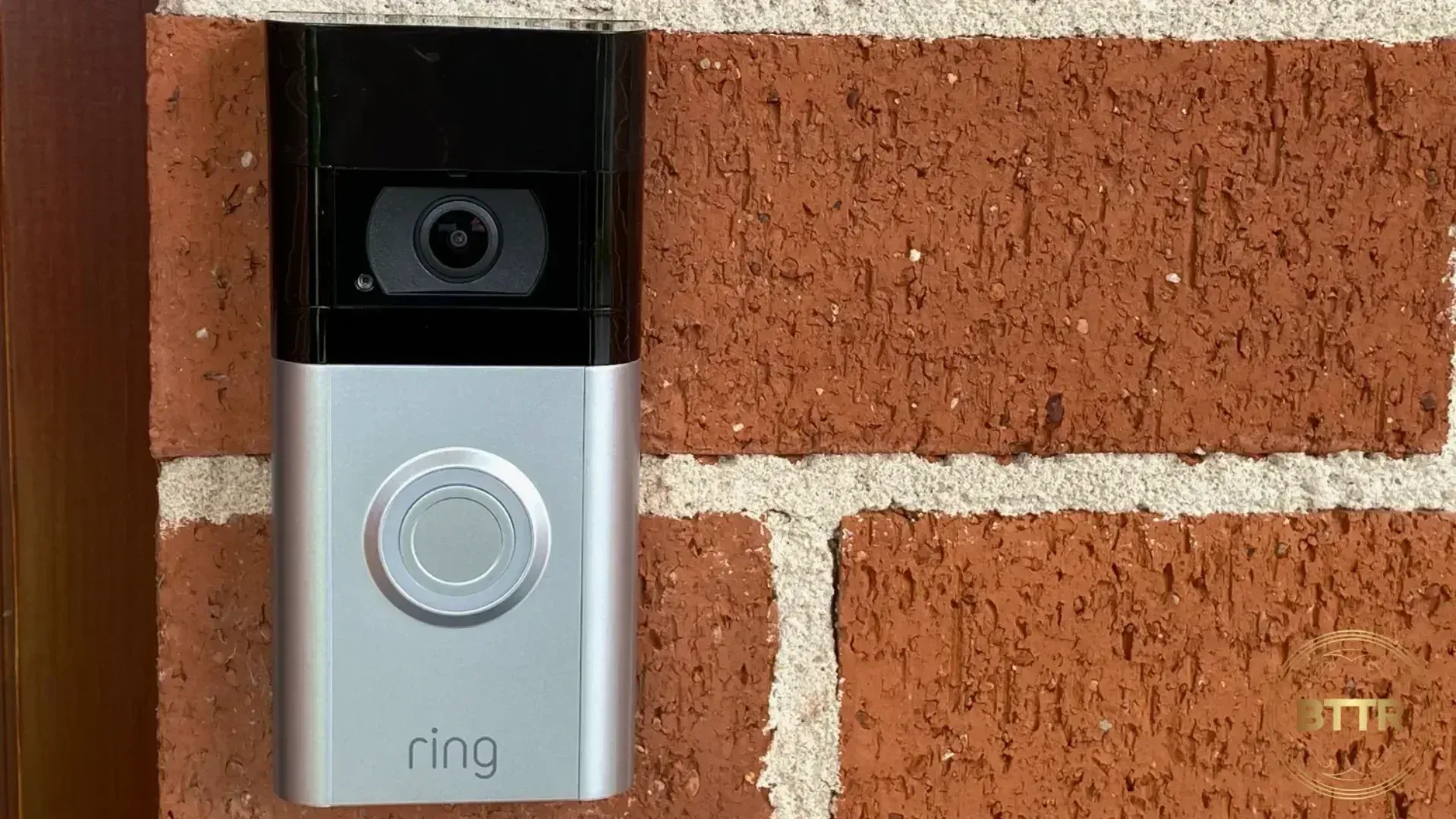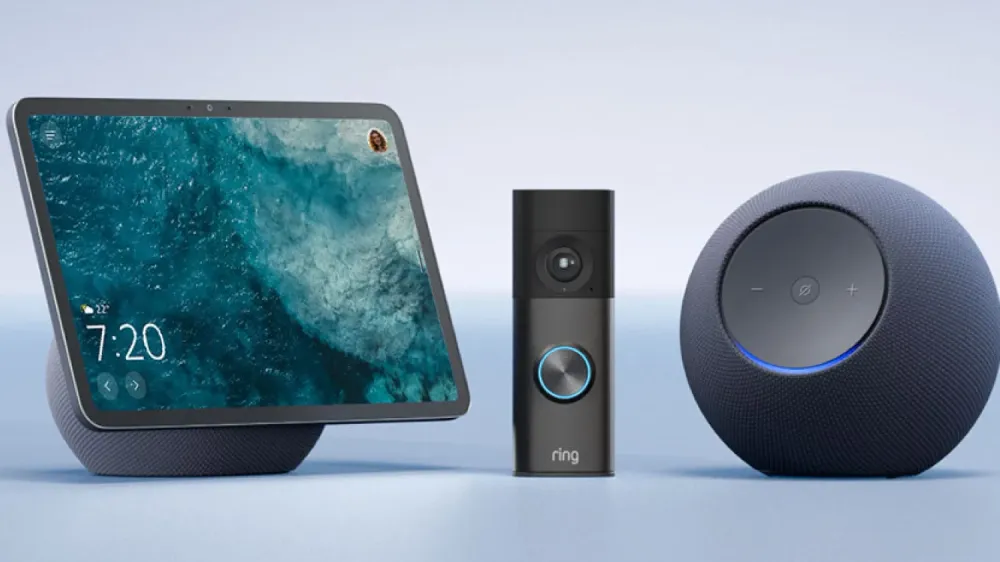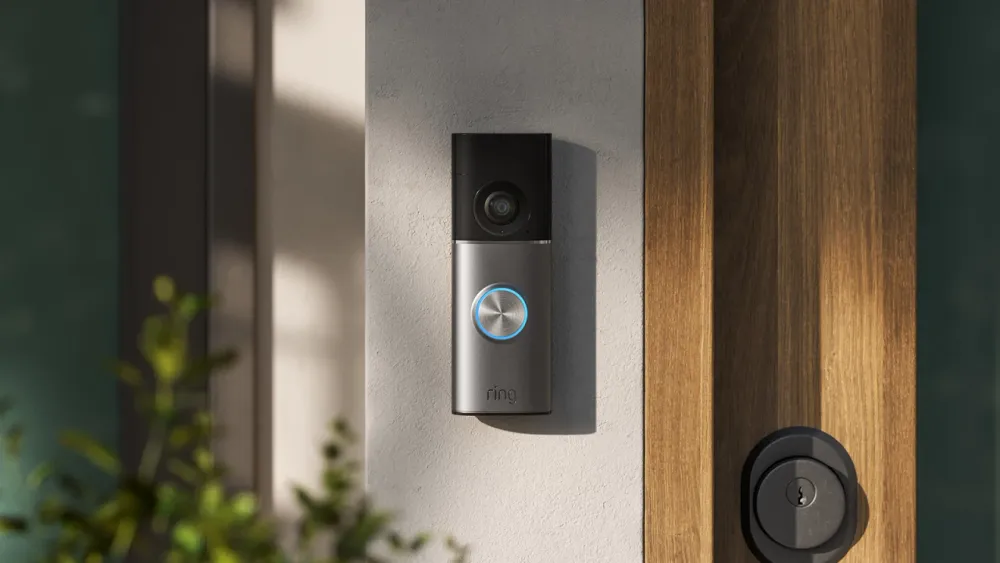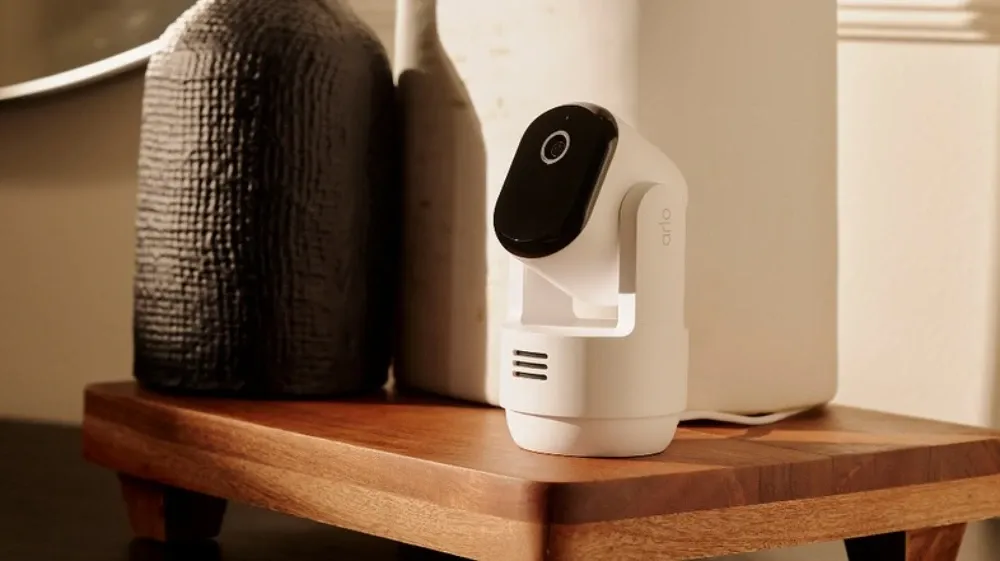BTTR is independent, but we may earn money when you purchase through links on our site.
Scores
- Design: 9/10
- Performance: 8.5/10
- Overall: 8.8/10
Pros
- Simple to use
- Versatile app
- Good video quality
Cons
- No easy way to upgrade
- Requires an ongoing subscription for key features
- No support for Google smart speakers
🛒 Where to buy Ring
Available from these trusted retailers:











BTTR is independent, but we may earn money when you purchase through links on our site. This helps us cover costs and continue providing honest reviews. Find out why you should trust us.
Ring was an early pioneer in the market of high-quality video doorbells, and the Ring Video Doorbell 4 continues to build on the brand’s reputation.
However, the latest battery-powered video doorbell from Amazon’s Ring brand is an iterative improvement rather than a revolution.
It offers minor improvements, making it great for someone looking to get their first video doorbell, but not rewarding for someone looking to upgrade from a previous model.
Design
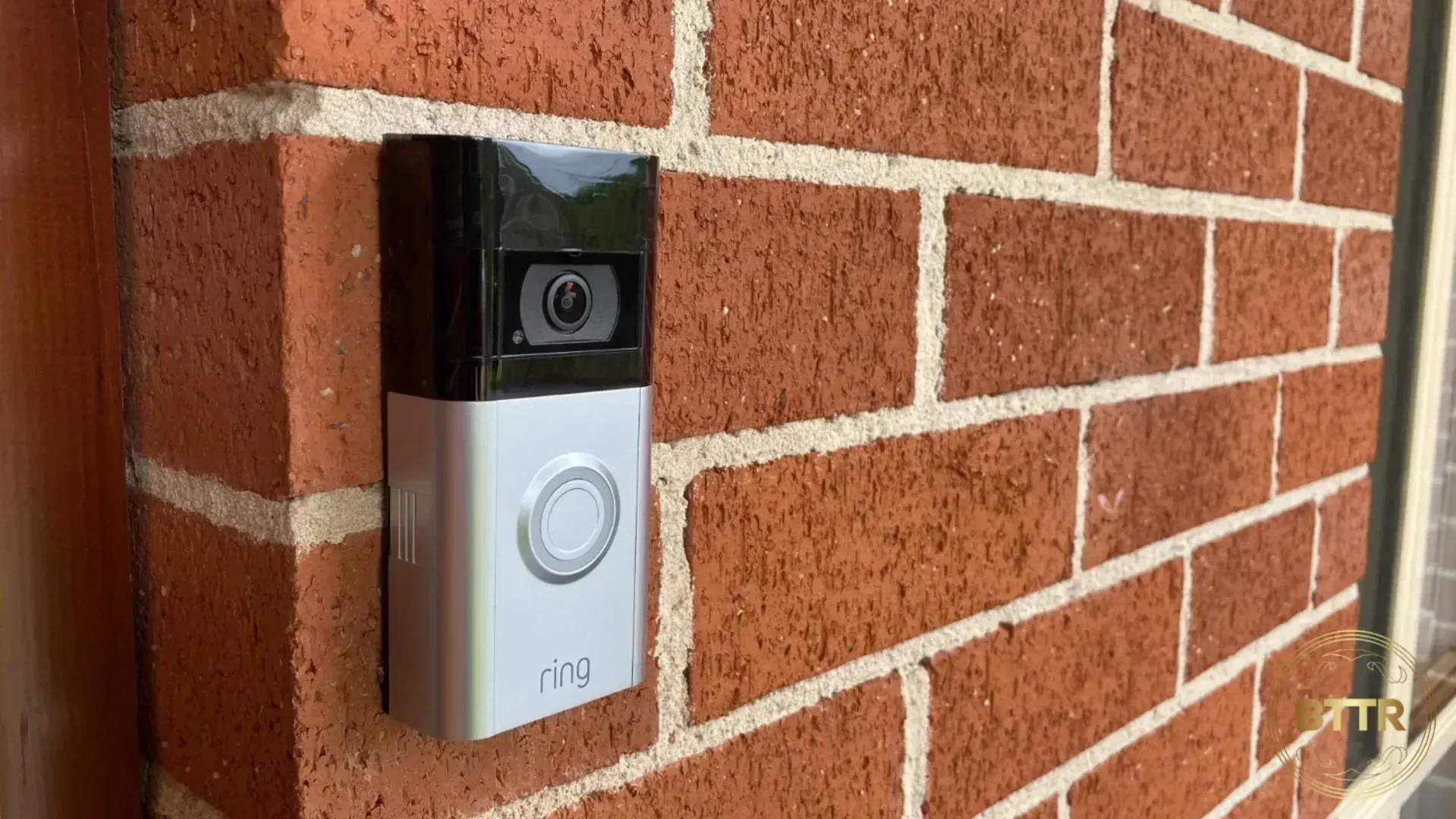
The Ring Video Doorbell 4’s design is about function over form. It looks practically identical to the previous generations of battery-powered Ring doorbells.
This is great for upgraders, though. I have been a long-time user of the Ring Video Doorbell 2, and was slightly anxious I would have to move the screw holes to install the newer model.
Fortunately, the framing plate for installing the Video 4 is the same as the Video 2, so you can simply unscrew the old and screw in the new.
Because no two homes are the same, the Video Doorbell 4 comes with a few options for mounting, including a corner mount and a wedge to tilt the camera, so you can get a clearer view.
There is an option for hard-wiring the doorbell if you prefer your smart home gadgets a little more permanent. For most people, though, the flexibility of the battery will suffice.
Because I could use the baseplate of my Video Doorbell 2, I didn’t need to drill holes to install the doorbell 4. But I can say from last time that the process is easy, even for those not too handy.
The unit itself is exceptionally straightforward. The top half of the device houses the camera, which offers 1080p video quality and night vision.
The bottom half is the doorbell button, housed underneath a cover plate. You need to use the supplied screwdriver to remove the security screw to replace the battery, which slides up into the unit from the bottom.
Setup through the app
Installing the doorbell near your front door is only part of the job. You also need to connect it to your home network and phone using the Ring app.
Fortunately, this is an effortless process. You get clear instructions in the box, and the app itself will hold your hand throughout the process.
The only challenge with the entire process is that there’s no clear path to upgrade your product.
Instead, adding the Doorbell 4 to my Ring account counted it as an additional product, instead of a replacement for the Video Doorbell 2.
This created some challenges with my pre-existing Ring Protect account, which I’ll address a bit further down.
Features
Considering the Video Doorbell 4 is a clear iterative update on previous models, why would anyone want to upgrade?
It’s a good question. The biggest answer with the Video Doorbell 4 specifically is the addition of colour pre-roll clips to your recordings. This feature lets you see four seconds of the lead up to someone pressing the doorbell or motion being detected, so you can get a clearer understanding of what triggered the alert.
Upgrading from the Doorbell 2, the feature is entirely new, though those with a Video Doorbell 3 will have experienced black and white pre-roll.
There’s support for both 2.4GHz and 5GHz Wi-Fi, which again was available in the Video Doorbell 3 but not the Doorbell 2 as well.
Otherwise, you get many of the same features as other Ring doorbells. The camera will supply 1080p recordings and has a 160-degree horizontal field of view and an 84-degree vertical field of view.
You get night vision in black and white, plus two-way talk, live view and advanced motion detection. The software can also set motion alert zones and package detection.
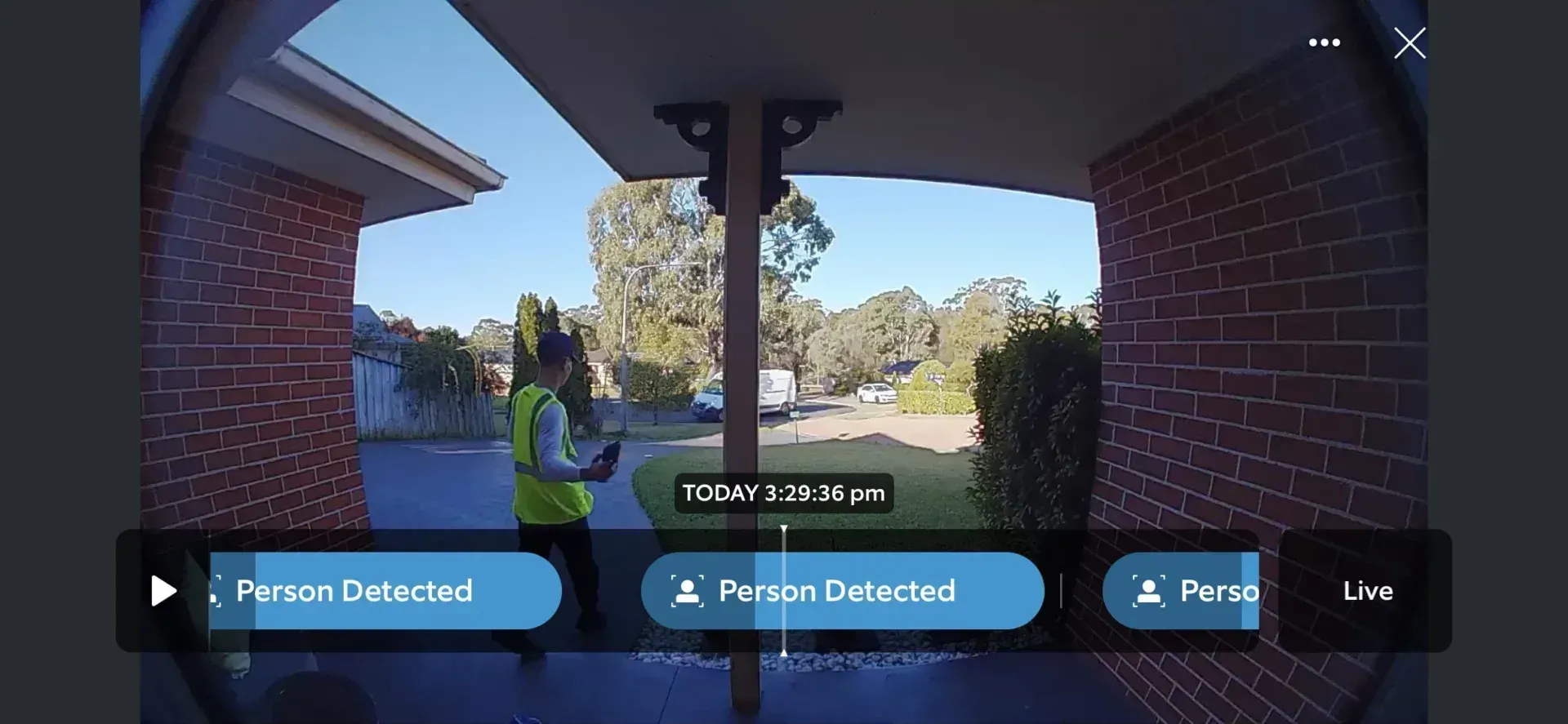
Performance
You can’t deny that Ring knows what it is doing with its video doorbells. The combination of easy to use hardware (push the button!) and intelligent software helps secure your home effortlessly.
The reality is that the bulk of Ring’s market strength comes in the form of its software.
Regardless of whether you use the iOS app, the Android app or access your account via the web, the Video Doorbell 4 delivers reasonably clear video in daylight.
It’s not the highest quality video you will ever see, but it’s clear and bright and easy to watch.
At night, the black and white video stream is easy to see and make out details, though obviously not as clearly as colour video during the day.
While the video is clear, it's also set at a traditional wide-angle aspect ratio. This means that even when set up at the height suggested by Ring, you can’t see the ground close to the doorbell.
While this doesn’t matter for answering the door, it does limit the functionality of things like parcel recognition in the app.
Ring has taken some steps to remedy this with the launch of the Video Doorbell Plus, which has a 150 × 150 degree field of view.
The addition of 4 seconds of pre-roll video is actually a great way to get context on different motion alerts. It’s not a feature I noticed I was missing with the Doorbell 2, but the fact I can see the lead up to the video adds that extra layer of usefulness.
Often with the Doorbell 2, the doorbell would start recording when it realised a person was there, but often the person was already half gone by the time the recording started (as you can see in the video below. Pre-roll counters that, by offering the context as part of the recording.
The catch is that it’s typically a bit choppy and low res before the video properly kicks in.
The Doorbell 4 is significantly quicker than the Doorbell 2 to actually ring when pressed. Because I have Alexa-powered speakers throughout my home, the doorbell announces a visitor through the home automatically, and it does so more quickly than the Doorbell 2 as well.
Unfortunately, if you’re a Google Assistant smartphone, you’re not going to get that same connectivity with your smart speakers.
Battery life feels better with the newer model as well. Because it varies a lot depending on how frequently you access the doorbell and stream video, how regularly it’s pressed and numerous other factors, it’s hard to judge exactly. But it feels like the Doorbell 4’s battery is lasting longer than the Doorbell 2’s did.
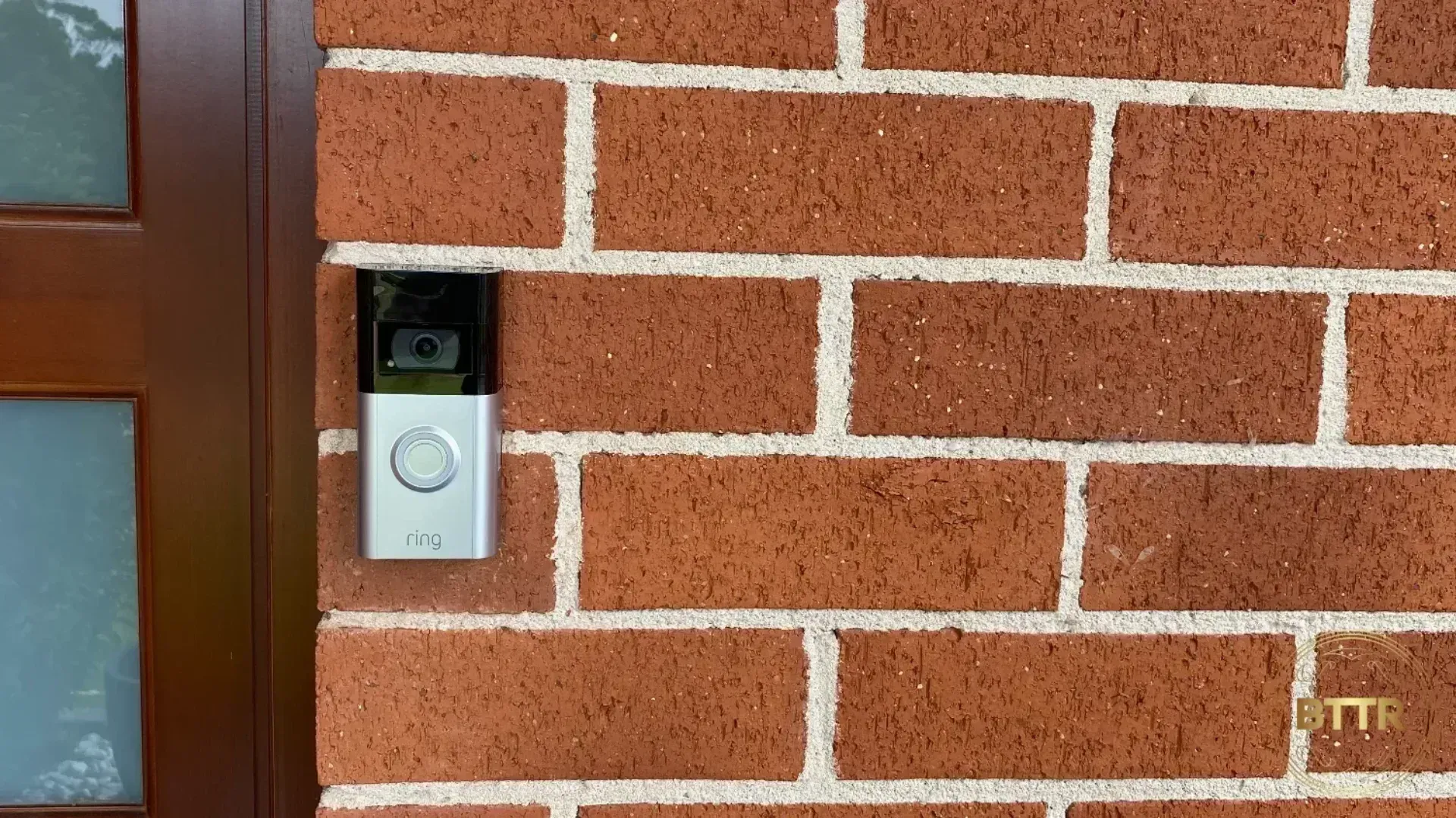
Convenient communication?
If you want to avoid contact with local salespeople or annoying neighbours, the Doorbell 4 offers two-way talking through the doorbell as well. You can answer a press via the app on your phone and communicate.
If that sounds like too much effort, you can also set automatic replies, which act as a virtual answering machine for your doorway.
There are a handful to choose from, but you can’t really customise them. Ring does offer seasonal responses, but they work to Northern Hemisphere seasons, so all the options are out of whack.
It doesn’t make sense for a doorbell to announce, “Hi! Spring’s here and it looks like you are too! We’ll be right there” when it’s the middle of May in Sydney.
While you can set the delay for the automated reply to work, I found it frustrating that the only way to avoid it was to answer via the app. On a couple of occasions, I was talking to the person who made the delivery when the quick reply kicked in, talking over me.
Ultimately, I found it easier to just turn it off.
Security at a price
To get the most out of the Video Doorbell 4, you’re going to need a subscription to Ring Protect. It costs $49.95 a year for a single camera account.
Without Ring Protect, you can’t save videos, or see historic recordings. Nor will you get certain notifications.
While this is nothing new, I feel it’s important to draw attention to the fact that there is absolutely no upgrade path from a previous doorbell to a newer model.
As I mentioned above, I replaced my Doorbell 2 with the Doorbell 4 for this review. Adding the new device to my account was effortless, and it activated a 30-day free trial of a full multi-camera Ring Protect account.
After that 30 days ended, the Doorbell 4 stopped recording. My single camera Protect account was tied to the Doorbell 2, and there was no way to easily switch it over. After seeking support, I eventually discovered I would have to cancel my account, which would get me a pro rata refund, and then start a new plan.
I couldn’t find any tutorials or guidance on this process online. It was only communicated to me through Ring’s PR team.
It seems to me that if I’m installing a second doorbell camera at the same address, it’s likely I am replacing my previous doorbell. The fact Ring doesn’t offer any easy way to do this is massively disappointing.
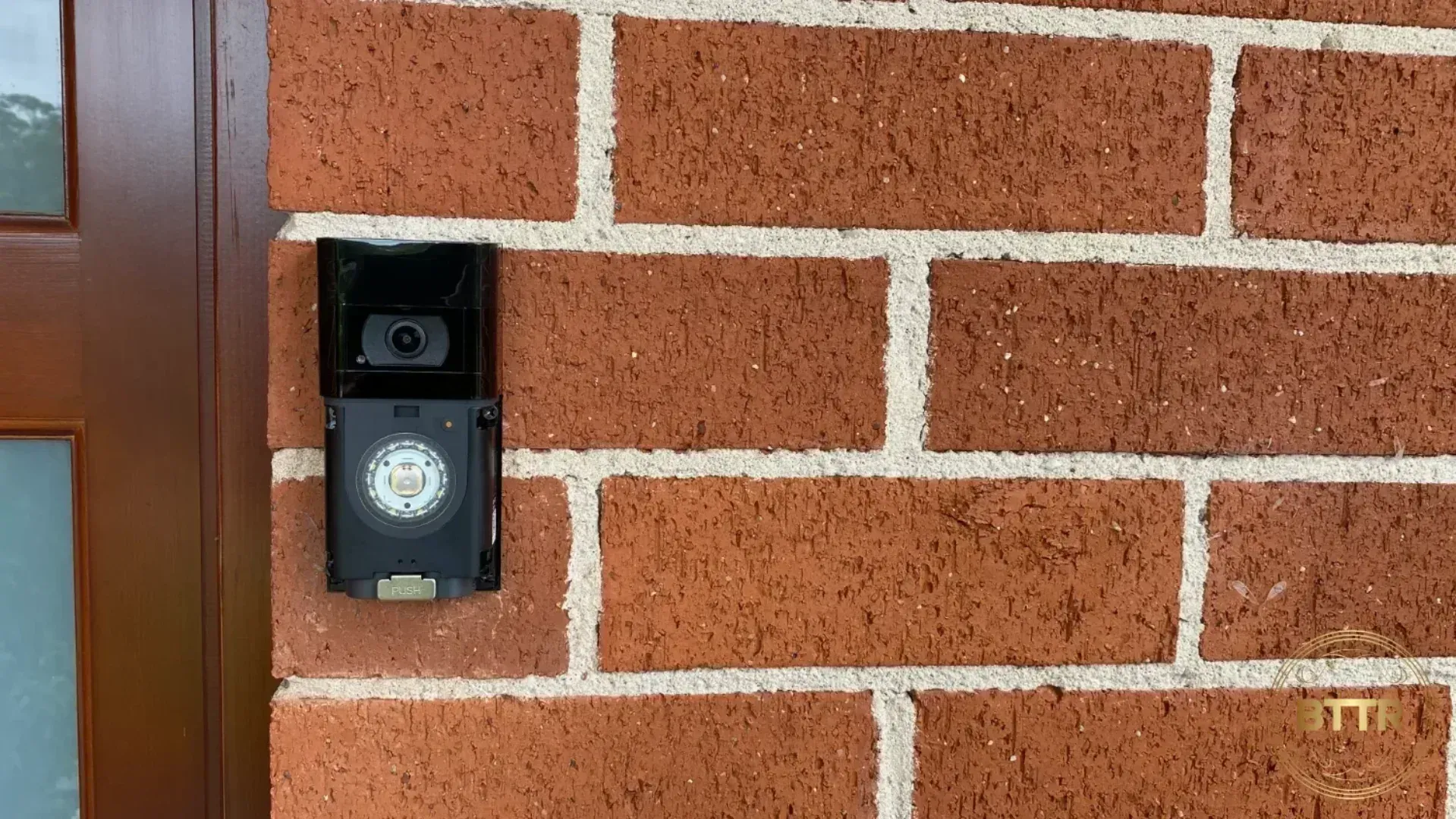
Verdict
Ring makes great video doorbells, though you need to factor in the ongoing cost of the Ring Protect subscription to your budget.
For peace of mind, being able to answer the doorbell from anywhere, as well as receiving notifications on parcel deliveries or even motion alerts is worth it in an age where countless people are working from home.
The app is pretty good, allowing you to access your doorbell’s camera from anywhere, set custom motion zones and alerts and more. You can also pair it with Alexa speakers to get notifications around your home effortlessly, though it won’t do the same with Google smart speakers.
But this isn’t a product you should consider as an upgrade. If you are looking for your first smart doorbell, then this is a great option. If you already own a Ring doorbell, don’t upgrade to this one.
🛒 Where to buy Ring
Available from these trusted retailers:











BTTR is independent, but we may earn money when you purchase through links on our site. This helps us cover costs and continue providing honest reviews. Find out why you should trust us.
Frequently Asked Questions
What is the main benefit of the Colour Pre-Roll feature on the Ring Doorbell 4?
The Colour Pre-Roll feature captures up to four seconds of video footage before a motion event is officially triggered, providing context for what caused the alert, and it records this in full colour, unlike earlier models.
Is the Ring Doorbell 4 battery-powered or hardwired?
The Ring Video Doorbell 4 can be powered by either its removable, rechargeable battery pack or by connecting it to existing doorbell wiring for constant charge.
Does this model require a Ring Protect subscription?
Yes, while you can view the live feed and receive instant alerts without a subscription, a Ring Protect Plan is required to save, review, and share any recorded videos and photos.
How does the Quick Replies feature work?
Quick Replies allows you to select from a set of pre-recorded messages for your doorbell to play when someone rings or triggers the motion sensor, letting you communicate without speaking live.
Can I adjust the area the motion sensor covers?
Yes, you can customise the motion detection area by setting Adjustable Motion Zones within the Ring app, helping to focus on relevant areas and reduce unwanted notifications from traffic or passers-by.

